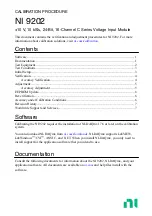
21 .
2. Problem - Liftgate will not raise or raises slowly with a load and the pump motor running. The
raise speed of the LRST 40 from ground on a 56” bed height while empty at 70°F is
approximately 15 seconds.
Cause
a . Low hydraulic fluid
b . Cold Weather
c . Cylinders are plumbed
incorrectly to pump
d . Overload condition
e . Low voltage and/or bad
ground
f . Defective raise solenoid
coil or valve
g . Improperly adjusted or
defective main relief
valve
Correction
Make sure the reservoir has the proper amount of fluid . The hydraulic fluid
should be within ½" of the top of the reservoir with the liftgate in the stored
position . Fill with Dexron Ill automatic transmission fluid or other acceptable
fluid (see Hydraulic Fluid Chart in "Maintenance Guide" section of this manual) .
Low fluid levels can introduce air, which will compress, especially when loaded
and can make the liftgate feel "spongy" . It can also make the gate raise at
varying and alternating speeds (i .e . slower as the air is compressed, then
suddenly quicker as the air expands in a repeating pattern) .
Refer to Hydraulic Fluid Chart in "Maintenance Guide" section of this manual,
for alternative oils to use for cold weather conditions
Check that the cylinders and pump are plumbed together according to the
drawings in this liftgate owner's manual . The C1 port on the pump (C1 is
stamped in the aluminum pump base by this port) is the high pressure port and
should connect to the rod end ports of the cylinders . The other ports on the
cylinders are the low pressure lowering ports and should be plumbed to the C2
port on the pump (C2 is stamped in the aluminum pump base by this port)
The power unit on the LRST40 is equipped with a lifting relief valve to prevent
overloading of the liftgate while attempting to raise a load . See relief setting in
"Maintenance Guide" section of this manual . Do NOT overload the liftqate .
If the voltage reaching the motor drops below 10V under max . load conditions,
this low voltage can cause the liftgate to slow . If voltages get low enough or
ground is inadequate, the liftgate may not raise at all (see Problem 1) and will
not be able to develop the rated relief pressure . Low voltages can cause motor
start solenoids to overheat and internally weld the contacts closed, which can
lead to motor overheating and pump failure . DO NOT run the liftgate under low
voltage/and or bad ground conditions .
With the "UP" switch engaged check for voltage on the green wire at the
switch . If no voltage is present, then replace the switch . If voltage is present,
with the "UP" switch engaged, check for voltage at the green wire on the
raise solenoid valve coil terminal at the pump . If no voltage is present, the
green wire from the "UP" switch is loose or broken and needs repaired . Check
for proper ground at the purple wire on the raising solenwoid coil . Repair or
replace ground as required . If there is voltage (minimum of 9 .5 volts) and proper
ground at the raising coil and the valve is not opening to allow the gate to raise,
either the raise coil is bad or the entire raise coil/valve assembly is bad . To
check to see if the coil is defective, remove the green and purple wires from
the spade terminals on the raise coil and check the resistance between these
spade terminals (3 .6 - 4 .4 Ohm acceptable) . Note: Low resistance can cause
the 20 fuse to blow (see Problem 1, part b) and high resistance will lower the
coils magnetic force and may not shift the valve . If proper resistance does not
exist, replace the defective coil, otherwise replace the defective raise coil/valve
assembly .
See section "d" above for relief valve setting . Plumb a pressure gauge into the
high pressure circuit of the liftgate (those hoses connected to the C1 port on
the pump) . Remove all loads from the liftgate's platform . Engage the "RAISE"
switch until the liftgate is fully raised . Keep the "RAISE" switch engaged until
the pump bypasses through the relief valve and note the pressure on the gauge
at this time . If the rated relief pressure is not present during relief, adjust the
high pressure relief valve setting as necessary . There are two relief valves on
this pump so make sure to adjust only the high pressure relief setting at this
time . The high pressure relief is the higher one on the aluminum pump base .
If the relief pressure is not attainable the relief valve must be cleaned and/or
replaced or the pump is defective . See part k below .
Continued on following page
Summary of Contents for LRST-40
Page 24: ...Rev 1 22 3C MP109296...




































